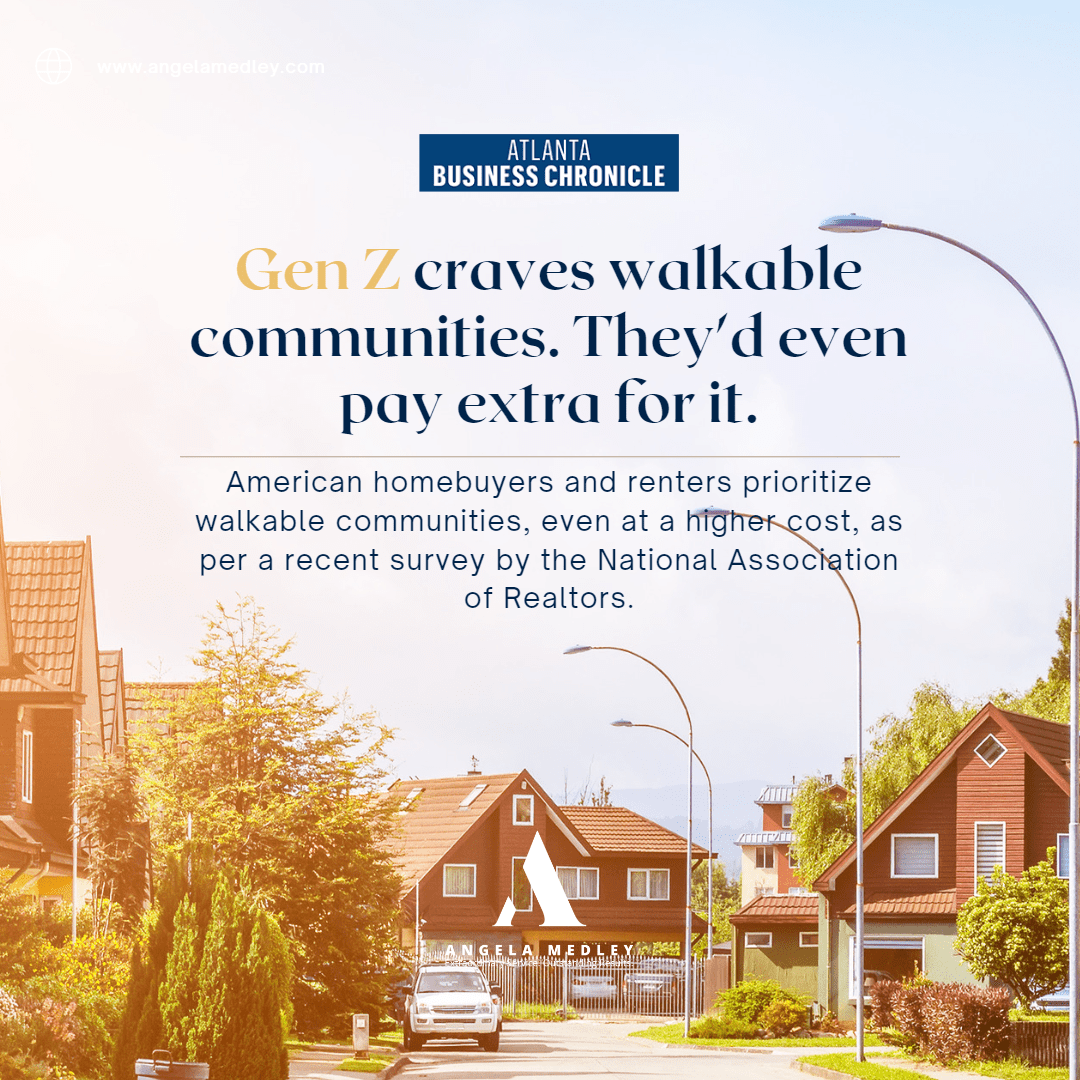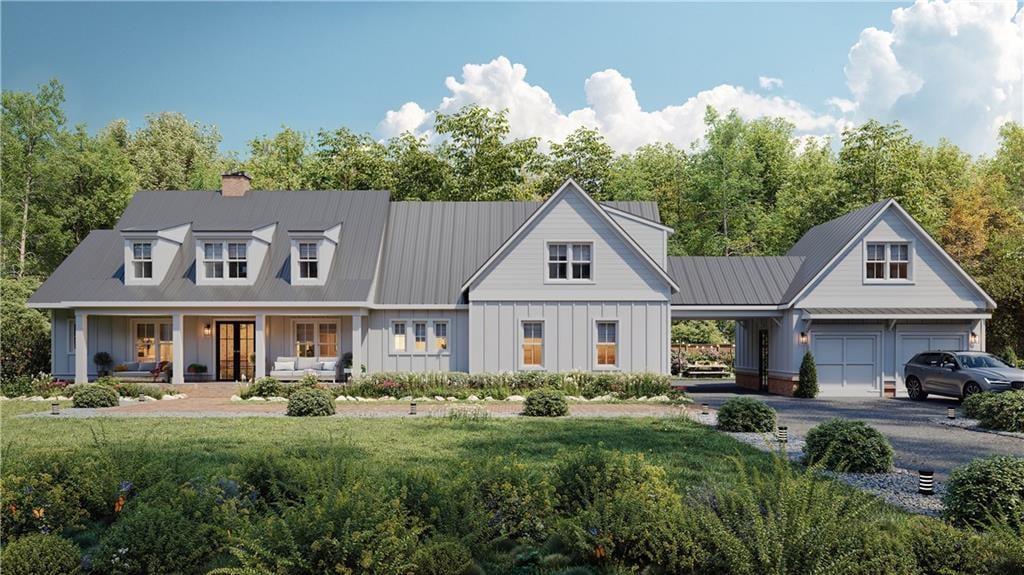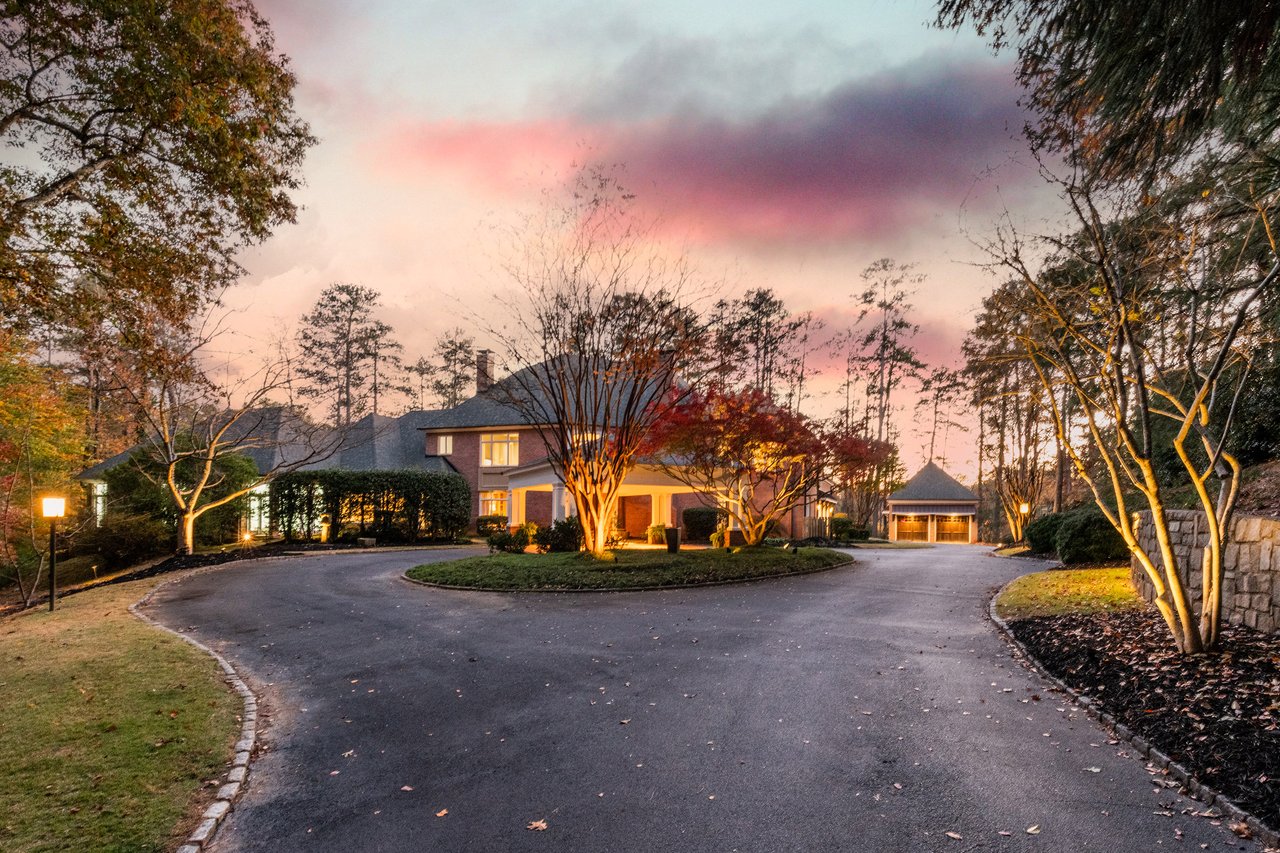
Gen Z craves walkable communities.
Angela Medley July 24, 2023

Angela Medley July 24, 2023
By Tyler Wilkins on Atlanta Business Chronicle
American homebuyers and renters prefer to live in walkable communities, even if it comes at a premium, according to recently released survey results from the National Association of Realtors.
The 2023 National Community and Transportation Preferences Survey, a poll conducted in April of 2,000 adults in the 50-largest metro areas, offers a glimpse into the robust demand to live in pedestrian-oriented environments. It observed a modest uptick in the importance placed on walkability compared to previous years.
Walkability is one of several factors driving the growth in Intown Atlanta, especially the neighborhoods along the BeltLine. Several suburban communities are also leaning into the appeal of accessing destinations on foot by creating trail networks and mixed-use town centers.
Younger generations appear to place the highest value on being close to amenities. About 92% of Generation Z respondents would pay at least "a little more" to live within walking distance of parks, shops and restaurants. The same was stated by 85% of millennials, 74% of Gen X, 69% of baby boomers and 56% of the silent generation.
More than 30% of Gen Z and millennial respondents would be willing to pay “a lot more” to live in walkable communities, compared to 24% across all generations. Paying that premium may be necessary in many cases. Among other reasons, a shortfall of housing supply has contributed toward escalating prices in urban centers across major metro areas.
In 2021, Atlanta multifamily rents and for-sale housing prices were 44% and 70% higher, respectively, in walkable areas than car-dependent ones, according to a recent report by Smart Growth America. Real estate professionals often point to restrictive density and land-use regulations as a hurdle in the way of creating a mix of housing at diverse price points in sought-after areas.
The community and transportation preferences survey showed a strong correlation between quality of life and living in walkable communities. Almost 90% of respondents who reported living in close proximity to a lot of amenities are satisfied with their quality of life, while that dropped to 67% for those who do not live within walking distance of shops, restaurants, parks and similar places.
Gen Z and millennial respondents were most likely to list access to public transit, bike lanes and paths as a very important factor when deciding where to live. Sidewalks and places to take walks were favored by 84% of all respondents, similar to polls conducted in previous years.
Respondents were asked to choose between two housing options: a multifamily unit with an easy walk to shops and restaurants and shorter commute to work, or a detached, single-family house in a car-dependent community with a longer commute to work. More than half of the Americans surveyed would prefer to live in the denser, more walkable community than the car-dependent one. Gen Z overwhelmingly chose that option, while other generations were closer to an even split.
Full article: https://www.bizjournals.com/atlanta/news/2023/07/07/walkability-national-realtors-data-2023.html?utm_source=st&utm_medium=en&utm_campaign=me_sub&utm_content=AT&ana=e_AT_me_sub&j=32012368&senddate=2023-07-07
Stay up to date on the latest real estate trends.

Here’s Why It Might Be the Smartest Move of the Year





Angela introduces her luxury listing at 2000 Grande Loch in Roswell


114 Trinity Hollow Drive Canton, GA 30115

Your Dream Home Price Tag? It depends on this.